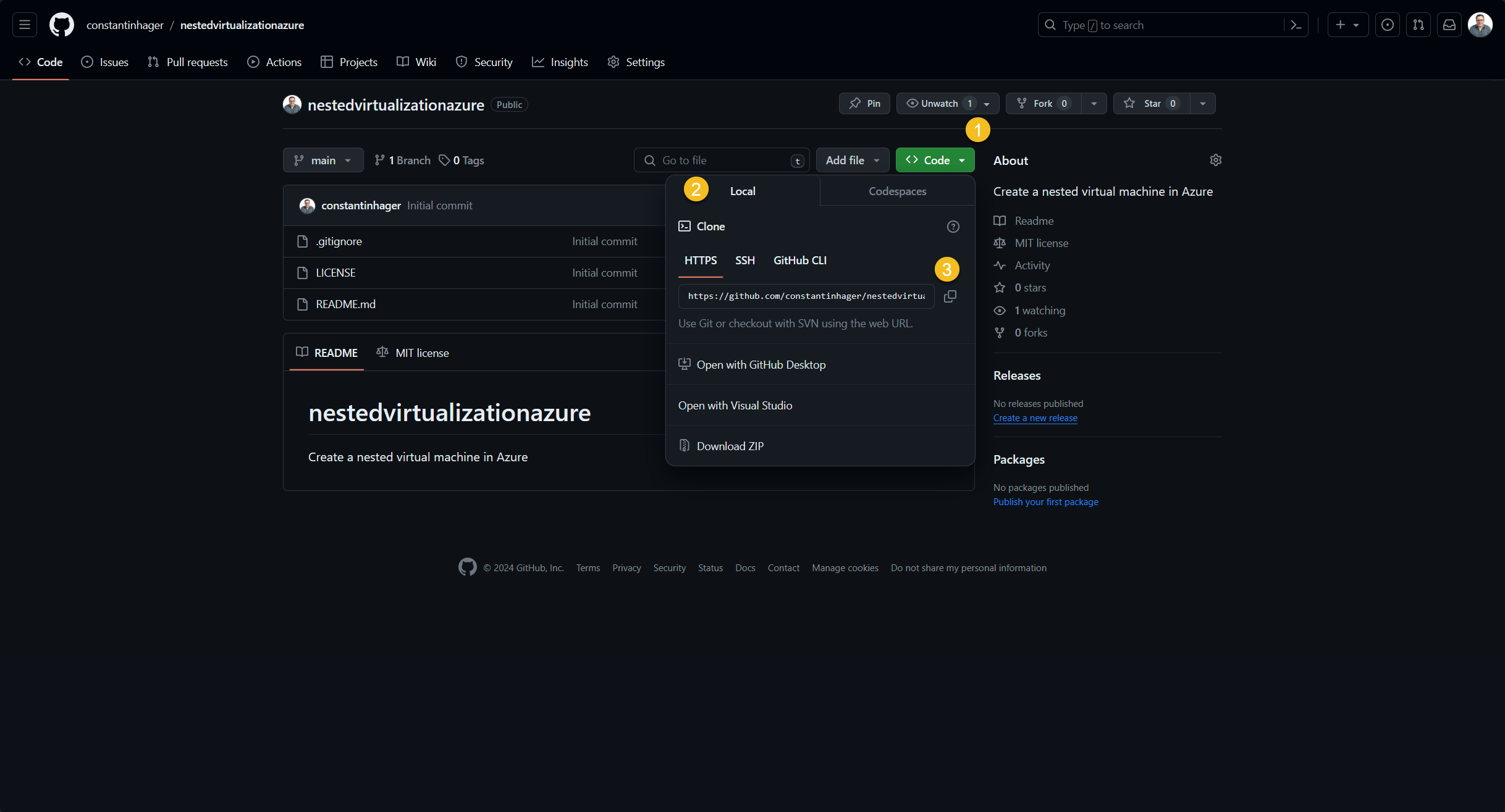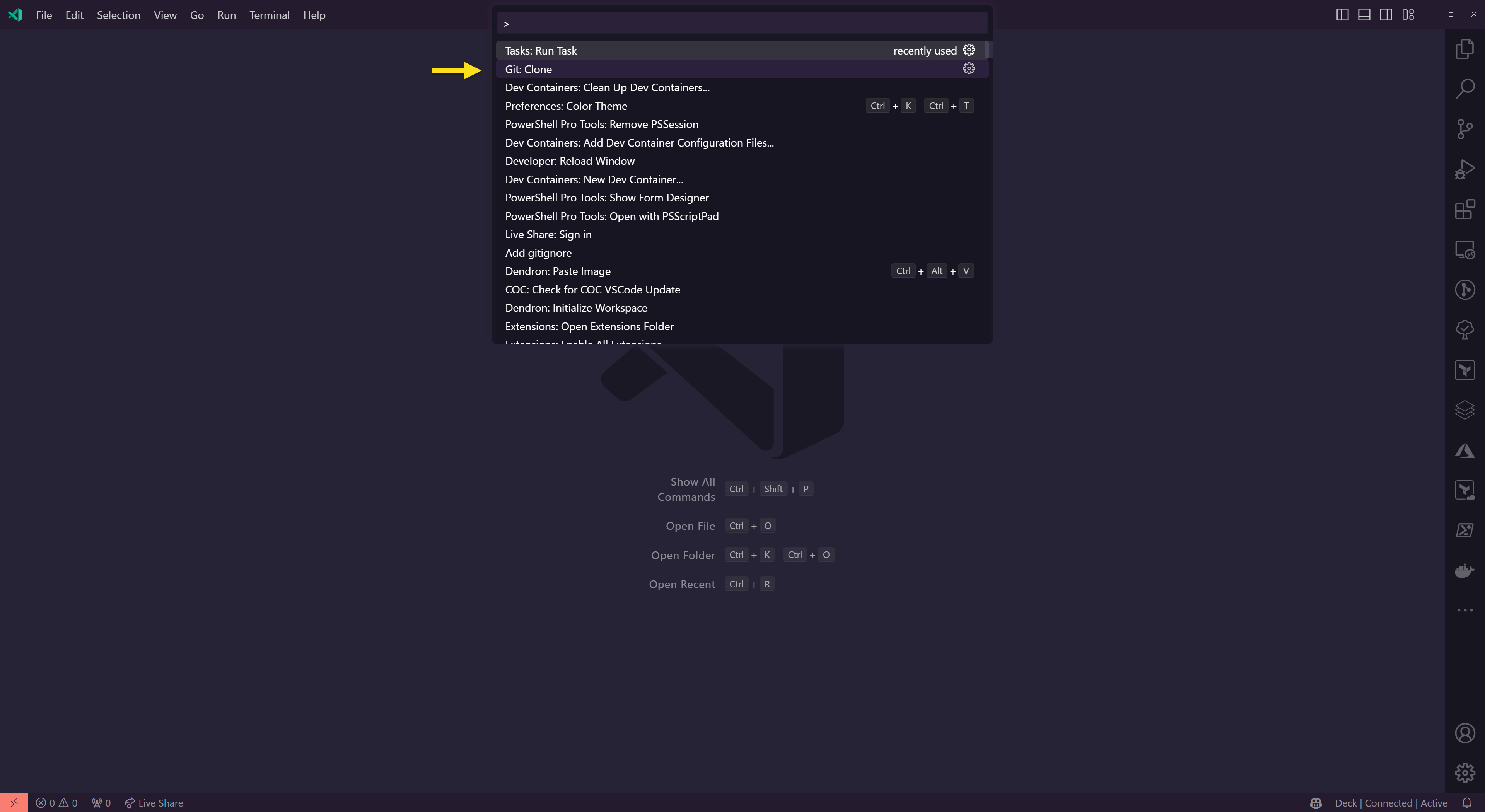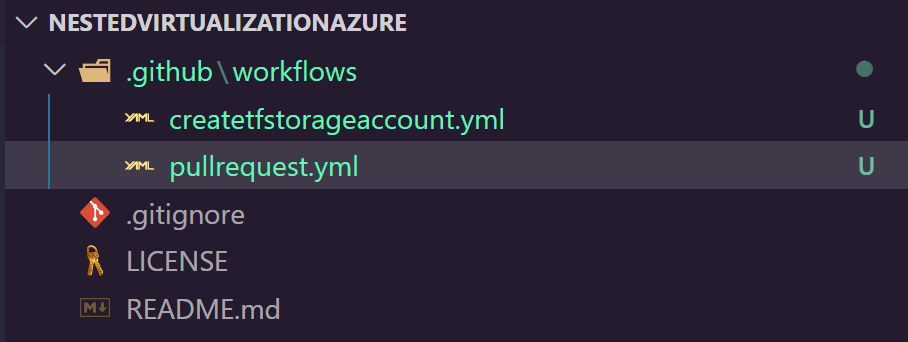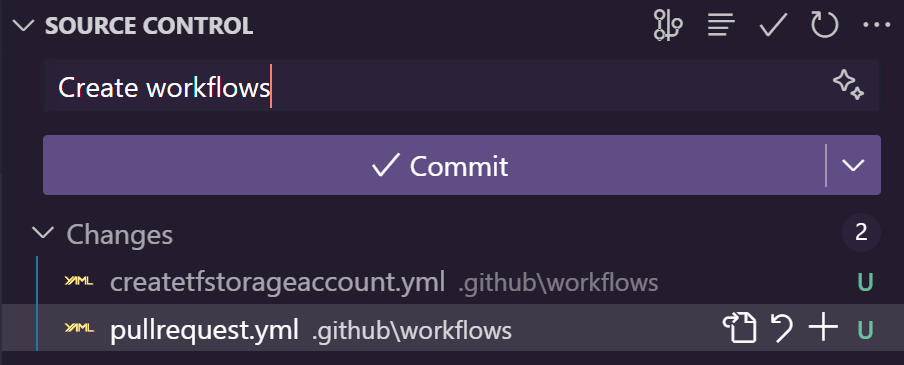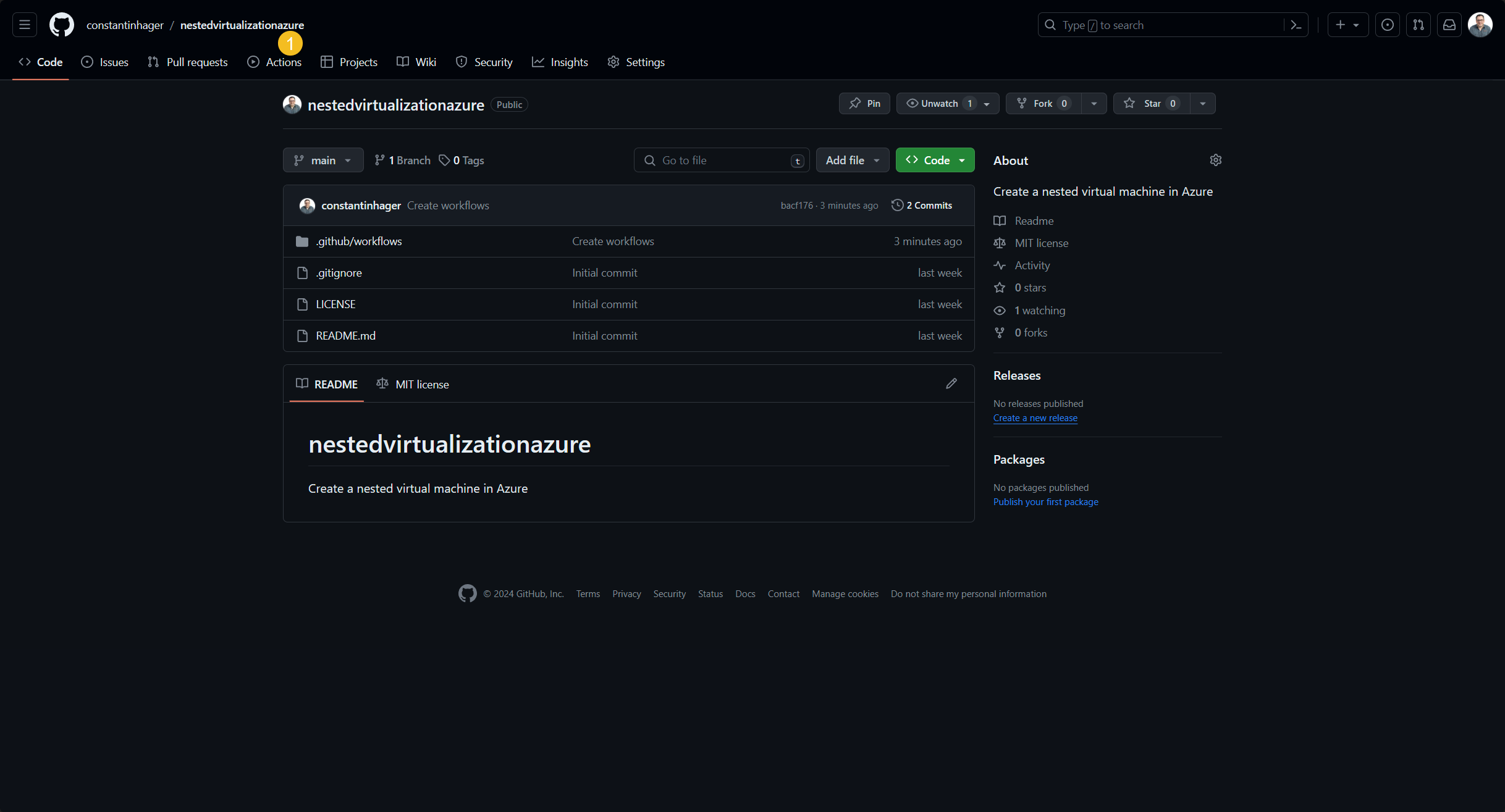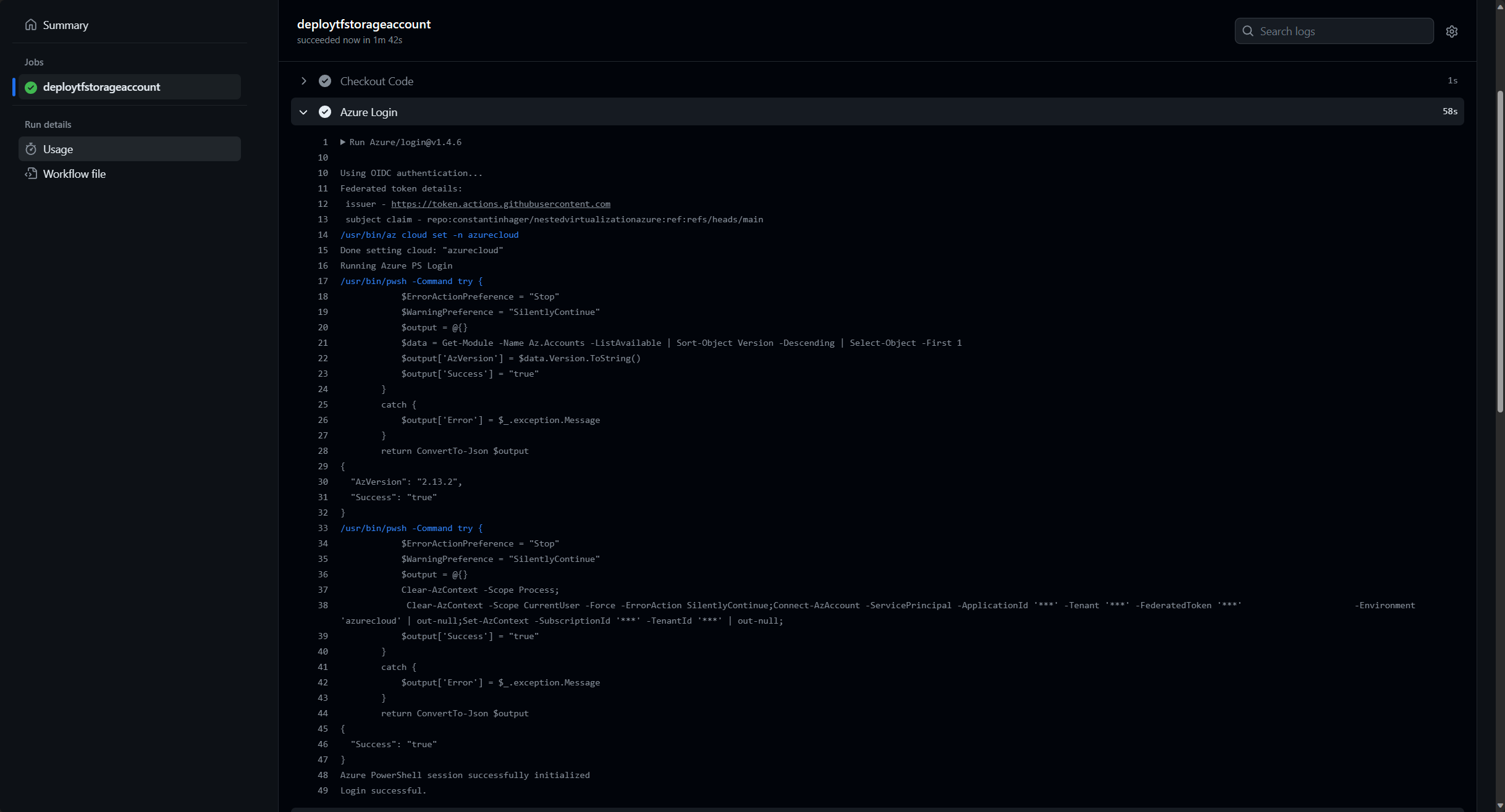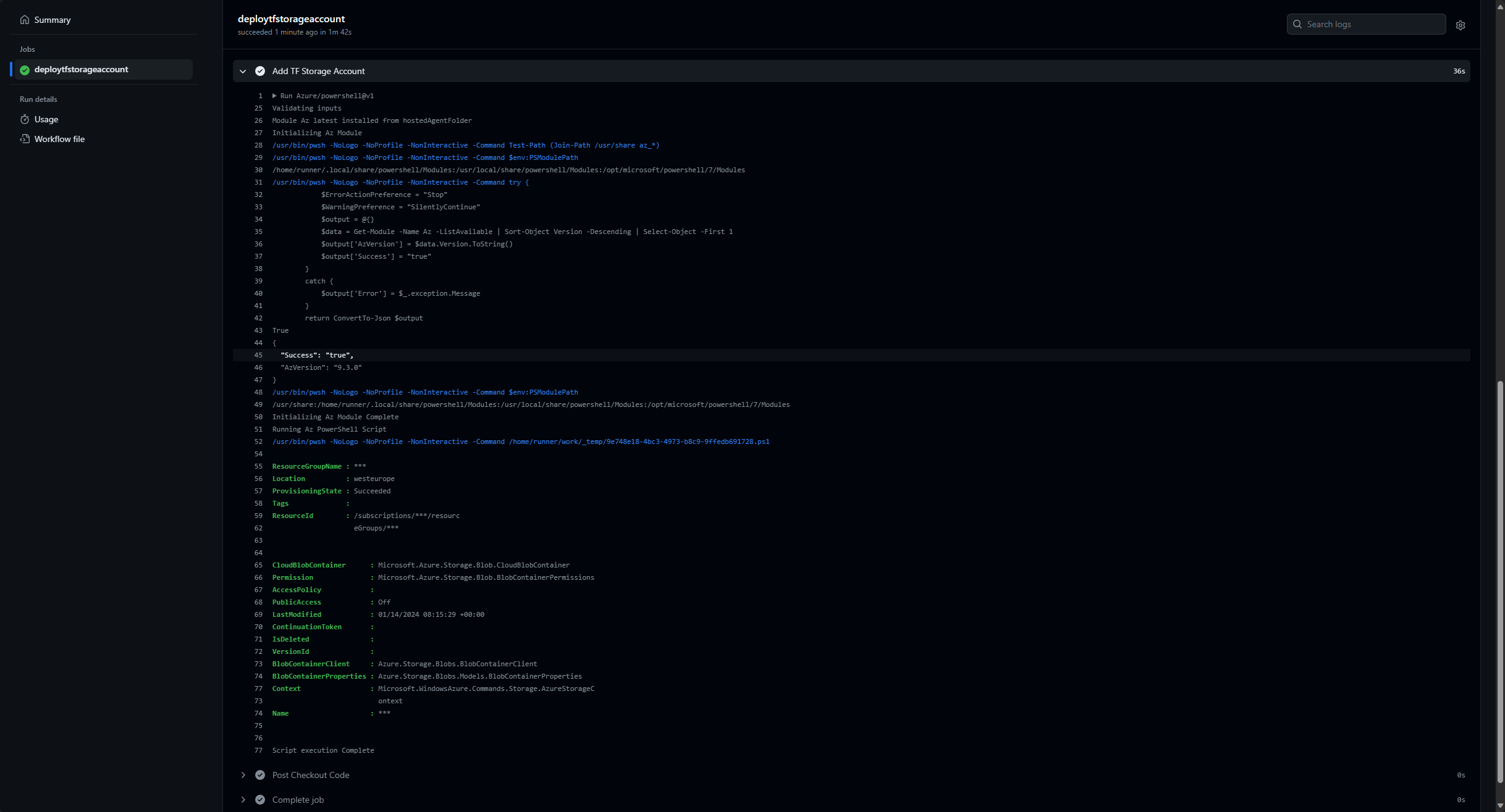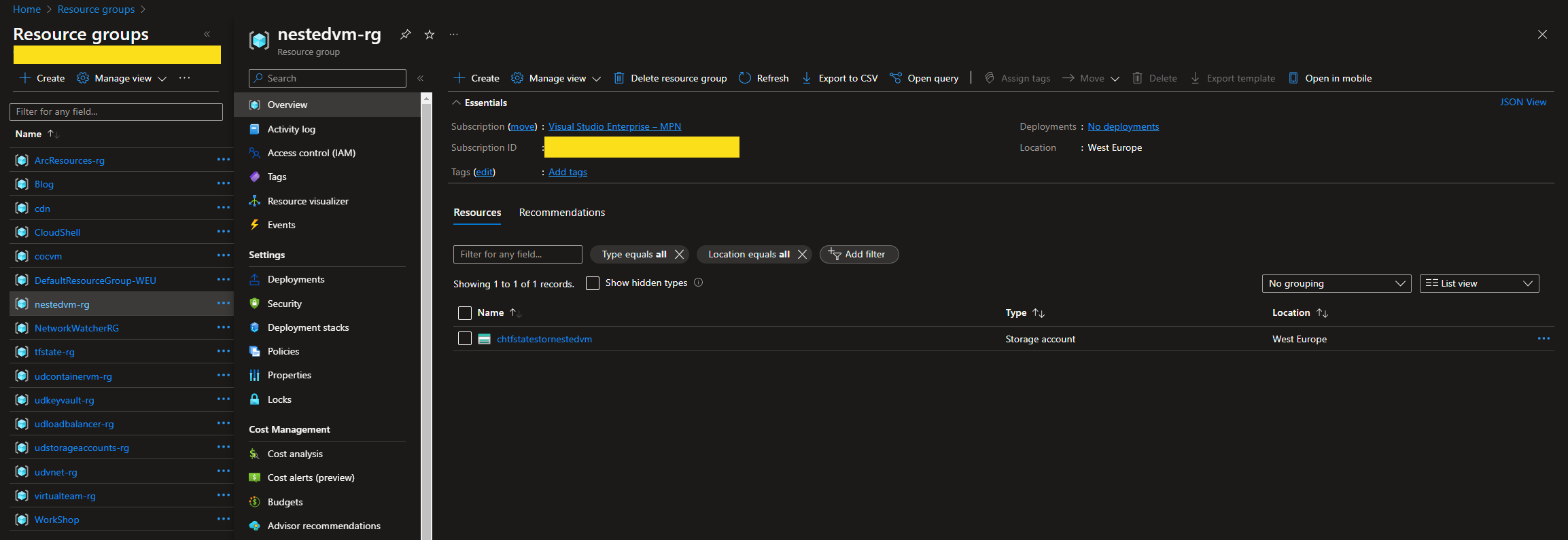Building a nested virtual machine in Azure: Part 3
Series Table of contents:
We continue our journey of building a nested virtual machine in Azure. In the following article, I will discuss the following aspect:
- Create the GitHub Workflows
What are GitHub Workflows?
A workflow is a configurable automated process that will run one or more jobs. Workflows are defined by a YAML file checked in to your repository and will run when triggered by an event in your repository, or they can be triggered manually, or at a defined schedule.
Workflows are defined in the .github/workflows directory in a repository, and a repository can have multiple workflows, each of which can perform a different set of tasks.
If you want to learn more check out the official GitHub documentation
We will create the following workflows:
- A workflow that triggers if a pull request is created.
- A workflow that triggers the Terraform Azure Storage Account.
Clone the GitHub repository
Your local machine must have GIT installed.
To generate files within our recently created GitHub repository, it is necessary to first clone the repository from GitHub.
To clone the repository to your local machine, select the “Code” button within your repository, switch to the local tab and copy the HTTPS URL.
Inside of Visual Studio Code press CTRL + SHIFT + P (or F1, or CMD + SHIFT + P) to open the command palette and select “GIT: Clone”.
Paste the GitHub URL and press the ENTER key, select a local folder and click on “Select as Repository Destination”. Select “Open” to reload Visual Studio Code with the cloned repository.
If you're logged into GitHub within Visual Studio Code, you can also utilize the "Clone from GitHub" option. You can also authenticate to GitHub from within Visual Studio Code.
Set up the GitHub workflows
create the .github/workflows folder structure
Deploy Terraform Storage Account workflow (deploytfstorageaccount.yml)
1
2
3
4
5
6
7
8
9
10
11
12
13
14
15
16
17
18
19
20
21
22
23
24
25
26
27
28
29
30
31
32
33
34
35
36
37
38
39
40
41
42
43
44
45
46
47
48
49
50
51
52
53
54
55
56
57
name: CreateTFStorageAccount
on:
workflow_dispatch:
permissions:
id-token: write
issues: write
pull-requests: write
contents: read
jobs:
deploytfstorageaccount:
runs-on: ubuntu-latest
steps:
- name: Checkout Code
uses: actions/checkout@v3
- name: Azure Login
uses: Azure/login@v1.4.6
with:
client-id: $
tenant-id: $
subscription-id: $
enable-AzPSSession: true
- name: Add TF Storage Account
uses: Azure/powershell@v1
with:
inlineScript: |
$Param = @{
Name = $Env:RESOURCE_GROUP_NAME
Location = $Env:STORAGE_ACCOUNT_LOCATION
}
New-AzResourceGroup @Param
$Param = @{
ResourceGroupName = $Env:RESOURCE_GROUP_NAME
Name = $Env:STORAGE_ACCOUNT_NAME
Location = $Env:STORAGE_ACCOUNT_LOCATION
SkuName = $Env:STORAGE_ACCOUNT_SKU
}
$StorageAccount = New-AzStorageAccount @Param
$Param = @{
Name = $Env:STORAGE_CONTAINER_NAME
Context = $StorageAccount.Context
}
New-AzStorageContainer @Param
azPSVersion: latest
env:
RESOURCE_GROUP_NAME: $
STORAGE_ACCOUNT_NAME: $
STORAGE_CONTAINER_NAME: $
STORAGE_ACCOUNT_LOCATION: West Europe
STORAGE_ACCOUNT_SKU: Standard_LRS
Pull Request workflow (pullrequest.yml)
The workflow might be adjusted based on your Pull Request. The Terraform steps will be featured in the upcoming blog post.
1
2
3
4
5
6
7
8
9
10
11
12
13
14
15
16
17
18
19
20
21
22
23
24
25
26
27
28
29
30
31
32
33
34
35
36
37
38
39
40
41
42
43
44
45
46
47
48
49
50
51
52
53
54
55
56
57
58
59
60
61
62
63
64
65
66
67
68
69
70
71
72
73
74
75
76
77
78
79
80
81
82
83
84
85
86
87
88
89
90
91
92
93
94
95
96
97
98
99
100
101
102
103
name: Pull Request
on:
pull_request:
branches:
- main
env:
TF_LOG: INFO
permissions:
id-token: write
issues: write
pull-requests: write
contents: read
jobs:
pr-infra-check:
runs-on: ubuntu-latest
steps:
# Checkout the repository to the GitHub Actions runner
- name: Checkout
uses: actions/checkout@v2
# Install the latest version of Terraform CLI
- name: Setup Terraform
uses: hashicorp/setup-terraform@v1
# Log into Azure with OIDC integration
- name: "Az CLI login"
uses: azure/login@v1
with:
client-id: $
tenant-id: $
subscription-id: $
# Run az commands to confirm sub access
- name: "Run az commands"
run: |
az account show
# Run Terraform init
#- name: Terraform Init
# id: init
# env:
# STORAGE_ACCOUNT: $
# CONTAINER_NAME: $
# RESOURCE_GROUP_NAME: $
# ARM_CLIENT_ID: $
# ARM_SUBSCRIPTION_ID: $
# ARM_TENANT_ID: $
# run: terraform init -backend-config="storage_account_name=$STORAGE_ACCOUNT" -backend-config="container_name=$CONTAINER_NAME" -backend-config="resource_group_name=$RESOURCE_GROUP_NAME"
# working-directory: <your working directory inside of the GitHub repository>
# Run a Terraform validate
#- name: Terraform validate
# id: validate
# if: success() || failure()
# env:
# ARM_CLIENT_ID: $
# ARM_SUBSCRIPTION_ID: $
# ARM_TENANT_ID: $
# run: terraform validate -no-color
# working-directory: <your working directory inside of the GitHub repository>
# Run a Terraform plan
#- name: Terraform plan
# id: plan
# env:
# ARM_CLIENT_ID: $
# ARM_SUBSCRIPTION_ID: $
# ARM_TENANT_ID: $
# run: terraform plan -no-color
# working-directory: <your working directory inside of the GitHub repository>
# Add a comment to pull requests with plan results
#- name: Add Plan Comment
# id: comment
# uses: actions/github-script@v3
# env:
# PLAN: "terraform\n$"
# with:
# github-token: $
# script: |
# const output = `#### Terraform Format and Style 🖌\`$\`
# #### Terraform Initialization ⚙️\`$\`
# #### Terraform Validation 🤖$
# #### Terraform Plan 📖\`$\`
# <details><summary>Show Plan</summary>
# \`\`\`${process.env.PLAN}\`\`\`
# </details>
# *Pusher: @$, Action: \`$\`, Working Directory: \`$\`, Workflow: \`$\`*`;
# github.issues.createComment({
# issue_number: context.issue.number,
# owner: context.repo.owner,
# repo: context.repo.repo,
# body: output
# })
Generate the files and insert the provided code into them.
End result:
Commit them to the repository.
Create the Terraform Storage Account
Navigate to your GitHub repository inside of a browser and select “Actions”.
Select “CreateTFStorageAccount”, select “Run workflow” and select “Run workflow”
Part 3 wraps up here. In the upcoming blog post, we’ll delve into an exploration of Terraform and delve into the mechanics of the Pull Request model.
